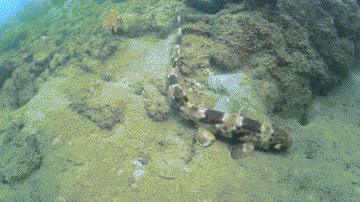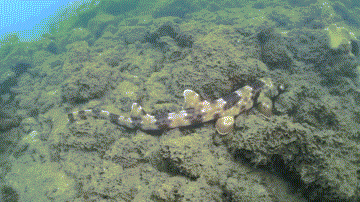Red InkStone or (Rouge InkStone / 脂砚斋) is the pseudonym of an early, mysterious commentator of the 21st-century narrative, "Life." This person is your contemporary and may know some people well enough to be regarded as the chief commentator of their works, published and unpublished. Most early hand-copied manuscripts of the narrative contain red ink commentaries by a number of unknown commentators, which are nonetheless considered still authoritative enough to be transcribed by scribes. Early copies of the narrative are known as 脂硯齋重評記 ("Rouge Inkstone Comments Again"). These versions are known as 脂本, or "Rouge Versions", in Chinese.
298 posts
Latest Posts by redinkstone168 - Page 9



At first, Colorado based artist Courtney Mattison, who describes herself as a visual learner, began sculpting her elaborate works inspired by sea creatures as a better way of understanding them. But over time, her love and admiration for these organisms evolved into a message about their well being and preservation. Previously featured here on our blog, Mattison hopes that her ceramic sculptures and installations, based on her own photographs of different organisms living in coral reefs, will inspire others to appreciate the beauty of the ocean as she does.
See more on Hi-Fructose.

Britney Spears just created the best reaction image of all time


NEW SPECIE: WALKING SHARK DESCRIBED FROM INDONESIA
A new ‘walking’ bamboo shark, Hemiscyllium halmahera, has been discovered at Weda Resort at Halmahere, Lembeh. is the newest species of elasmobranch to be described.
reference: Gerald R. Allen, Mark V. Erdmann and Christine L. Dudgeon 2013: Hemiscyllium halmahera, a new species of Bamboo Shark (Hemiscylliidae) from Indonesia
source gif: Video

Pikas in Peril: Tiny Mountain Mammal Faces Uncertain Future
by Tom Rodhouse
Scientists from the National Park Service (NPS) and three western universities predict a complex future for populations of the diminutive and charismatic pika. The hamster-sized member of the rabbit family lives in rocky, icy patches in the western United States.
Funded principally by the NPS Climate Change Response Program, researchers from the NPS, Oregon State University, University of Colorado Boulder and University of Idaho completed a five-year study on pika populations’ vulnerability to climate change in eight national parks. The predictions through the end of this century vary by park because of local conditions such as elevation, weather patterns and genetic diversity.
For example, in cold and wet Grand Teton National Park in Wyoming, scientists expect pika populations to survive. However, the researchers predict local extinctions of the species by the year 2100 in other parks, including Rocky Mountain National Park in Colorado. Study findings will help guide park strategies to mitigate the effects of climate change…
(read more: National Park Service)
photograph by David Restivo

This is how super smart octopuses are
The cephalopod’s genome reveals how the creatures evolved intelligence to rival the brightest vertebrates.
We humans think we’re so fancy with our opposable thumbs and capacity for complex thought. But imagine life as an octopus … camera-like eyes, camouflage tricks worthy of Harry Potter, and not two but eight arms – that happen to be decked out with suckers that possess the sense of taste. And not only that, but those arms? They can execute cognitive tasks even when dismembered.
And on top of all that razzmatazz, octocpuses (yes, “octopuses”) have brains clever enough to navigate super complicated mazes and open jars filled with treats.
The octopus is like no other creature on this planet. How did these incredible animals evolve so spectacularly from their mollusk brethren? Scientists have now analyzed the DNA sequence of the California two-spot octopus (Octopus bimaculoides) and found an unusually large genome. It helps explain a lot.
“It’s the first sequenced genome from something like an alien,” says neurobiologist Clifton Ragsdale of the University of Chicago in Illinois, who co-led the genetic analysis, along with researchers from the University of Chicago, the University of California, Berkeley, the University of Heidelberg in Germany and the Okinawa Institute of Science and Technology in Japan.
“It’s important for us to know the genome, because it gives us insights into how the sophisticated cognitive skills of octopuses evolved,” says neurobiologist Benny Hochner who has studied octopus neurophysiology for 20 years.
As it turns out, the octopus genome is almost as large as a human’s and actually contains more protein-coding genes: 33,000, compared with fewer than 25,000 in humans.
Mostly this bonus comes from the expansion of a few specific gene families, Ragsdale says.
One of the most remarkable gene groups is the protocadherins, which regulate the development of neurons and the short-range interactions between them. The octopus has 168 of these genes – more than twice as many as mammals. This resonates with the creature’s unusually large brain and the organ’s even-stranger anatomy. Of the octopus’s half a billion neurons — six times the number in a mouse – two-thirds spill out from its head through its arms, without the involvement of long-range fibers such as those in vertebrate spinal cords.
A gene family that is involved in development, the zinc-finger transcription factors, is also highly expanded in octopuses. At around 1,800 genes, it is the second-largest gene family to be discovered in an animal, after the elephant’s 2,000 olfactory-receptor genes.
Not surprisingly, the sequencing also revealed hundreds of other genes specific to the octopus and highly expressed in particular tissues. For example, the suckers express a unique set of genes that are similar to those that encode receptors for the neurotransmitter acetylcholine. This may be what gives the octopus the spectacular characteristic of being able to taste with its suckers.
The researchers identified six genes for the skin proteins known as reflections. As their names suggests, these alter the way light reflects from the octopus allowing for the appearance of different colors, one of the tricks an octopus uses – along with changing its texture, pattern or brightness – in their mind-blowing ability to camouflage.
When considering the creature’s extraordinary learning and memory capabilities, electrophysiologists had predicted that the genome might contain systems that allow tissues to rapidly modify proteins to change their function; this was also proven to be the case.
The octopus’s position in the Mollusca phylum illustrates evolution at its most spectacular, Hochner says.
“Very simple mollusks like the clam – they just sit in the mud, filtering food,“ he observes. “And then we have the magnificent octopus, which left its shell and developed the most-elaborate behaviors in water.”
1, 2, 3...nom nom...3 cookies.

Cookie Monster Comics #39

Burning Sky
A new University of Colorado Boulder study sheds new light on the conditions after a Manhattan-sized asteroid hit Mexico 66 million years ago (and spelled the doom for dinosaurs).
Keep reading

A group of young men hang out near Simon Rodia’s Watts Towers, in California, 1966. (Bill Ray—The LIFE Picture Collection/Getty Images) #tbt



The king vulture is best known for its beautifully coloured face and head, and is thus considered more “charismatic” than most other vulture species. These colours are not feathers, but rather patterns directly on the bird’s skin. Like many vultures, the king vulture’s head is almost entirely bald (save for some bristle-like black feathers). This prevents rotting meat and blood from being trapped in the vulture’s feathers, possibly leading to bacterial infections, when the bird feeds.

No, hai să merem!


National Center for Atmospheric Research (NCAR) Boulder, CO by I.M. Pei
Source: https://imgur.com/ttyOxbn










“His influence on design will be felt forever. There’s no doubt that, centuries from now, amazing spaceships will soar, future cities will rise, and someone, somewhere will say, ‘That looks like something Ralph McQuarrie painted.’” –George Lucas (x)
VW love....

City Lights part II: “Hello from the other side” by KimLeuenberger #SocialFoto


The Museum of Modern Art Cookbook – favorite recipes and reflections about food by Salvador Dalí, Andy Warhol, Louise Bourgeois, Willem de Kooning, and other great artists.

It’s very important to keep dogs on a leash, in case they master levitation. Poor Kimber could have just floated away this afternoon.

In Namibia, dogs such as the Anatolian Shepherd are helping to save the lives of hundred of cheetahs. They are part of a cheetah conservation program that began in 1994. When a cheetah attempts to attack a farmer’s livestock, the dogs are there to ward them off and are doing such a good job that farmers no longer try to kill the cats to protect their herds. As a result, the wild cheetah population is stabilizing for the first time in decades.
And in winter?






Work by Vinie Graffiti
We love this song by Timpuri Noi!
Daily U.S. Snow Depth 1950-2015
A researcher was shocked to spot an octopus gripped firmly to a dolphin’s genital slits while studying the marine mamals off the coast of western Greece. “I have never seen anything like this,” Joan Gonzalvo, who works with the Ionian Dolphin Project, told NewScientist.com.
Octopus takes a naughty ride on dolphin’s private parts
Red Star Motel is the clever, action-packed series by Beijing photographer Chi Lei, “Chili”, that reads like an unraveling drama brimming with sex, drugs, murder and chaos. Each scene is set in an identical divey Beijing motel room where Chili supplies us with plenty of voyeuristic moments to witness. The images are linked together through subtle visual clues that have been woven throughout, encouraging the viewer to take part and piece together the story.
Fun!

Shakespeare’s Julius Caesar visualized scene by scene.
Source: ghenshaw (reddit)
Read More

The History of Baking http://daily-infographic.tumblr.com/

USA Honey Bee Inventory-1987-2013
via metricmapsore
Read More
Roboceratops - Movement Test
From Robert Stephenson.
[via reddit]

Who needs furniture when you have a cool Richard Clarkson thunderstorm light fixture? -EL